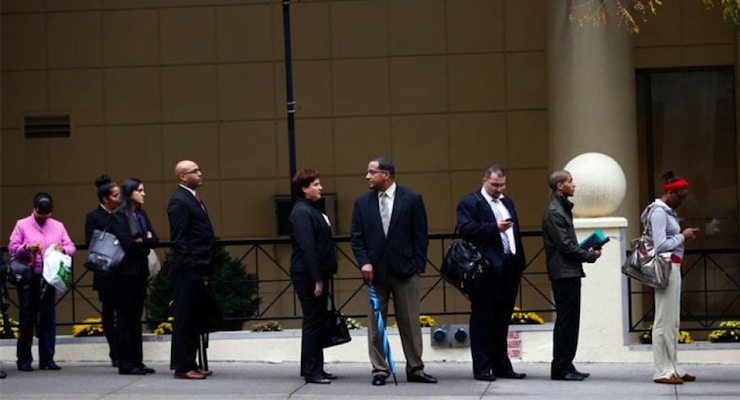

Job seekers wait on a line to interview with jobs fair and Labor Department officials in NYC. (Photo: REUTERS)
The number new weekly jobless claims, or initial claims for state unemployment benefits, increased 1,000 to a seasonally adjusted 260,000 for the week ended Oct.24. The Labor Department said on Thursday jobless claims remained close to levels last seen in late 1973.
Economists polled by Reuters had forecast claims rising to 263,000 last week.
A Labor Department analyst said there were no special factors influencing the data, and the prior week’s claims were unrevised. The latest report indicates the 34th straight week that claims were below the 300,000 threshold, which is normally associated with a fairly healthy jobs market. However, considering the weakening strength in job creation and number of long-term unemployed, as well as the number of part-time workers in the economy, the number of eligible Americans is considerably low historically.
The Federal Reserve on Wednesday noted that the pace of job gains had slowed, but said “underutilization of labor resources has diminished since early this year.” The September jobs report showed nonfarm payrolls in August and September averaged just 139,000, the weakest two-month rise since January of last year.
The four-week moving average of claims–which is considered a better measure of labor market, as it irons out week-to-week volatility–declined 4,000 to 259,250 last week. That’s the lowest reading since December 1973. But the claims report showed the number of people still receiving benefits after an initial week of aid fell 37,000 to 2.14 million in the week ended Oct. 17, which is the lowest since November 2000. But, again, the eligibility numbers are extremely low.
The four-week moving average of continuing claims fell 12,750 to 2.17 million, also the lowest level since November 2000. The four-week average of continuing claims fell 61,500 between the September and October survey periods, suggesting an improvement in the unemployment rate from 5.1 percent last month.





